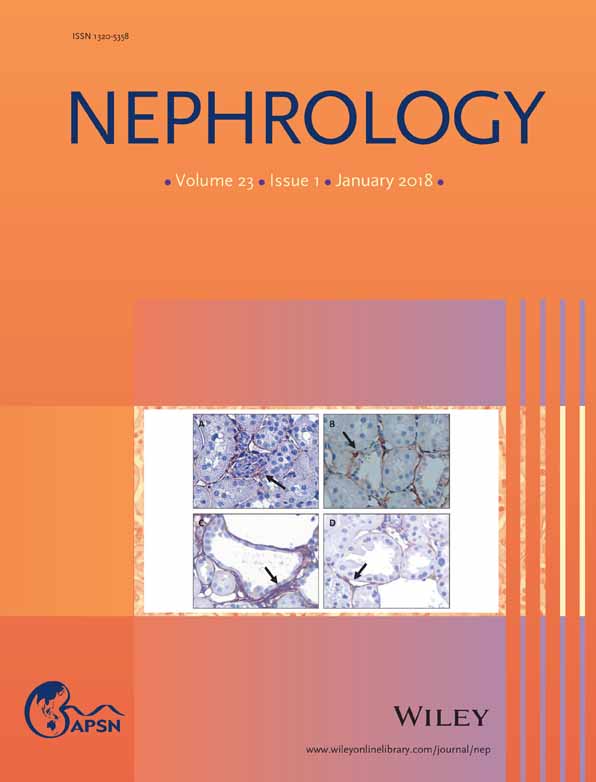Amiloride modifies the progression of lithium-induced renal interstitial fibrosis
ABSTRACT
Aim
Long-term administration of lithium has been associated with the development of a chronic interstitial fibrosis in addition to nephrogenic diabetes insipidus (NDI). Earlier studies have demonstrated that amiloride, by blocking the epithelial sodium channel ENaC and thus preventing lithium uptake into the principal cells of the collecting ducts, can partially reverse lithium-induced NDI. However, there are no long-term studies examining whether or not amiloride also modifies the progressive chronic interstitial fibrosis and tubular atrophy often evident with long-term lithium exposure.
Methods
Using an established animal model of lithium-induced chronic interstitial fibrosis, rats were treated with amiloride and lithium for 5 months following 1 month of exposure to lithium alone and compared with control animals and those given only lithium.
Results and Conclusions
In this study, the 5 months of amiloride therapy partially mitigated the lithium-induced NDI and limited the further progression of lithium-induced kidney fibrosis. This improvement was associated with decreased expression of the pro-fibrotic connective tissue growth factor (CTGF), along with reduced myofibroblast infiltration and decreased collagen deposition around the distended cortical collecting ducts. This may, in part, be mediated by modifying lithium-induced alterations in β-catenin activity through its effects on GSK-3β.




